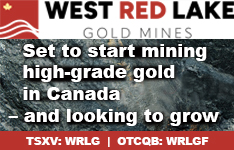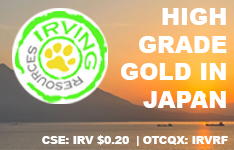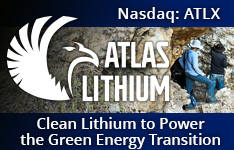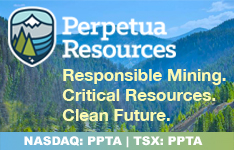Four years ago, when oil and gas companies made bold pledges to reduce emissions and shift towards renewable energy, their industries were in turmoil, according to Rebecca F. Elliott writing for the New York Times in November 2024.
The pandemic caused a sharp decline in fuel demand, leading to plummeting prices. Major Western oil and gas companies were losing significant amounts of money, with losses exceeding US$100 billion, according to energy consulting firm Wood Mackenzie, Eliott wrote. At the time, renewable energy appeared to be not only cleaner but also a more promising business than oil and gas for many companies and investors.
"Investors were focused on what I would say was the prevailing narrative around, 'It's all moving to wind and solar,'" said Darren Woods, chief executive officer of Exxon Mobil. "I had a lot of pressure to get into the wind and solar business," he added.
Buoyed by the shift in U.S. energy policies under President Donald Trump, investors are pivoting and once again supporting major oil and gas companies as the fervor for ESG initiatives wanes, particularly in corporate America, reported Tsvetana Paraskova in an OilPrice.com piece published on Investing.com on October 1, 2025.
Despite the recent craze for environmental, social, and governance (ESG) criteria in the markets, ESG has inadvertently benefited value investors by driving down the valuations of oil and gas companies to attractive levels, alongside the oil price crash of 2020. These rock-bottom valuations have enticed bargain hunters and contrarian investors to continue betting on fossil fuels, even amid a significant market and ideological shift against them.
For instance, during much of 2020 and 2021, Exxon Mobil Corp. (XOM:NYSE), the largest U.S. oil company by valuation, saw its share price fall below the per-share value of all its assets, Paraskova reported. The price-to-tangible book value per share dropped to below 1, compared to about 3 over the previous two decades, according to data compiled by Bloomberg and cited by Bloomberg Opinion columnist Javier Blas.
However, the Russian invasion of Ukraine, the subsequent surge in energy prices, and the energy crisis marked the beginning of the end for ESG and super-bargain valuations. The prospect of US$100 per barrel oil in the event of supply shortages bolstered the narrative for U.S. supermajors. Exxon and Chevron maintained their stance that the world will continue to need oil and gas for the foreseeable future, and investments in solar and wind are not suitable for companies focused on high returns and shareholder payouts.
Europe's major oil companies, especially Shell Plc. (SHEL:NYSE; SHEL:LON; SHELL:AMS) and BP Plc (BP:NYSE; BP:LSE), had to revise strategies that in 2020 promised a reduction in oil output by the end of the decade, the article said.
By 2024 and 2025, they reset their focus on upstream operations and pledged to increase oil and gas production to meet the world's growing energy demands, Paraskova noted. BP and Shell also significantly scaled back their commitments to invest in renewable energy sources, abandoning projects for biofuels plants in the Netherlands and redirecting more funds to core oil and gas operations at the expense of renewables investments.
Is Energy Transition Only Way Forward?
This sentiment is now widespread: the industry is facing fundamental questions about the feasibility and implementation of the energy transition, Irina Slav wrote for OilPrice.com in another article published on Investing.com, this one on October 14.
"This uncertainty is not only political but is increasingly technical, driven by real-world grid challenges that are forcing a reckoning between ambitious climate targets and practical energy security," Slav wrote.
This spring, both Spain and Portugal experienced a severe blackout, and Spain's grid operator is warning that it could happen again due to wild voltage fluctuations, the article noted.
This warning comes shortly after the network of the bloc's grid operators released its report on the April blackout, identifying excessive voltage as the cause. Excessive voltage is not something caused by gas, nuclear, or coal power plants. Voltage swings are one of the lesser-known characteristics of wind and solar installations, and they necessitate curtailment during low-demand periods to prevent blackouts, Slav noted. Essentially, grid operators are indicating that there is a problem with uncontrolled wind and solar, and it could be a significant issue.
"Facts like this tend to undermine the reputation of the energy transition as the only way forward, with a net zero of acceptable alternatives," Slav wrote.
Clean energy solutions, including offshore wind and green hydrogen, have faced high interest rates and supply chain challenges in recent years, making projects more costly and less profitable, the article said. This was a deal-breaker for Big Oil firms, which are averse to financial losses when oil prices are low in the cyclical energy commodities business and do not want additional financial burdens from losses in their low-carbon energy divisions.
Investors Start to Think 'Energy,' Not 'Crude' or 'Gas'
There have been times in recent history when the oil industry has struggled, particularly during the peak existential fears of the past decade about its future as a global power source, Eric Rosenbaum wrote for ETF Edge on CNBC.com on August 28.
However, since that panic subsided, the industry has performed reasonably well. Over the past five years, whether looking at the market performance of Exxon Mobil or the Energy Select Sector SPDR (XLE), returns have been strong after hitting a low point, Rosenbaum said.
Yet, this year, even though Exxon Mobil, Chevron (CVX:NYSE), and energy stocks as a whole have delivered positive returns, they haven't been the standout winners for investors focusing on the future of energy, according to Paul Baiocchi, head of fund sales and strategy at SS&C ALPS Advisors, Rosenbaum noted.
He said there have been year-to-date outflows of about US$7 billion from XLE, the largest and most liquid energy market ETF. Some of this may be due to concerns that the global economy could falter as a result of Trump's trade war, and with oil prices under pressure, oil and gas stocks may face greater challenges. However, it also indicates a broader shift in how investors are considering energy exposure.
"It speaks to the fact that advisors and investors are starting to think about energy more in terms of power than just crude oil and natural gas," Baiocchi said on CNBC's "ETF Edge" this week, according to Rosenbaum. "The conversation about energy is evolving beyond simply, 'I have to own the large majors.'"
Baiocchi's firm has long offered a way to make a more focused bet within the broader energy sector, led by its 15-year-old Alerian MLP ETF (AMLP), which concentrates on energy infrastructure like pipelines and has seen net inflows this year, Rosenbaum wrote.
Returning to the Core Business
The return to core business by European majors and the intensified focus on the Permian Basin and global exploration hotspots like Guyana for Exxon and Chevron have helped restore some of the market valuations lost in the 2020 downturn, Paraskova noted in the October 1 OilPrice.com piece.
Despite higher — but not excessively high — valuations, Big Oil still appears to be a bargain for investors, especially when compared to other S&P 500 sectors and Big Tech, she noted.
Investors who have remained with the oil industry through the past five turbulent years in markets, geopolitics, and the reversal of U.S. energy policies now anticipate that increased valuations will eventually lead to looser financial discipline, Bloomberg's Blas argues, according to Paraskova.
However, oil prices below US$70 per barrel and expectations of a surplus in the oil and LNG markets in the near term are keeping Big Oil committed to prudent investment strategies, with priorities focused on boosting production and returns for investors.
There are numerous oil stocks available, ranging from pure-play exploration and production companies (E&Ps) to midstream businesses, service providers, refiners, and integrated oil majors that cover a bit of everything. Investors have a wide array of choices, Lou Whiteman noted for The Motley Fool on October 16.
One of the world's largest energy companies, Enbridge, can cover the majors for your portfolio. Its market cap is US$102.7 billion, and according to The Motley Fool piece, it yields a 5.67% dividend.
Enbridge Inc.
In a financial environment often marked by volatility, Enbridge Inc. (ENB:NYSE; ENB:TSX), North America's leading energy infrastructure company, recently emphasized its dedication to shareholder returns by declaring a quarterly dividend of US$0.9425 per common share, according to a report by MarketMinute on FinancialContent.com on October 13.
Announced on July 29, 2025, this routine corporate action holds significant importance for investors. It strongly reaffirms the company's solid financial health and reliable cash flow generation, making it an appealing choice for income-focused portfolios, even before the market was aware of the specific amount, the piece noted.
"The consistent declaration of a dividend, especially by a company with Enbridge's storied history, signals management's confidence in its operational stability and future earnings potential," MarketMinute said. "For investors, this translates into a reliable income stream, a crucial factor in an economic environment where dependable returns are highly prized. Enbridge's ability to maintain and grow its dividend showcases its resilience and strategic positioning within the essential energy sector."
Enbridge serves 7.1 energy customers in Canada and the U.S. and has been in business for 175 years, it said on its website.
In September, the company announced that it had made a final investment decision on two promising gas transmission projects. Enbridge signed commercial agreements for the Algonquin Reliable Affordable Resilient Enhancement project (AGT Enhancement), which aims to boost deliveries on the Algonquin Gas Transmission pipeline to existing Local Distribution Company (LDC) customers in the U.S. Northeast. Additionally, through its Matterhorn joint venture, Enbridge has reached a final investment decision on the Eiger Express Pipeline (Eiger), a pipeline capable of transporting up to 2.5 billion cubic feet per day (Bcf/d) from the Permian Basin to the Katy, Texas, area, serving the expanding U.S. Gulf Coast LNG market.
"We continue to deliver on the US$23 billion of gas transmission opportunities we outlined at our Investor Day in March," Executive Vice President, Gas Transmission Cynthia Hansen said. "Today's project announcements highlight the benefits of Enbridge's scale and demonstrate our ability to support growing natural gas demand in the U.S. Northeast and LNG exports from the U.S. Gulf Coast. "These investments add visibility to, and extend, our growth outlook through the end of the decade."
Once completed, the AGT Enhancement will provide approximately 75 Mmcf/d of additional natural gas, under long-term contracts, to investment-grade counterparties in the U.S. Northeast, the company said.
Natural gas plays a crucial role in the region's energy mix. This project is designed to enhance reliable supply and improve affordability by reducing winter price volatility for customers. Enbridge said it plans to invest US$0.3 billion in system upgrades within, or adjacent to, existing rights-of-way. Subject to the timely receipt of necessary government and regulatory approvals, Enbridge anticipates completing the AGT Enhancement by 2029.
The Eiger project is designed to transport up to 2.5 Bcf/d of natural gas through approximately 450 miles of 42-inch pipeline from the Permian Basin in West Texas to the Katy area. Upon its expected completion in 2028, Enbridge expects to hold a significant equity interest in up to 10 Bcf/d of long-haul Permian Basin egress pipeline capacity, connected to key storage facilities and LNG export hubs along the U.S. Gulf Coast.
This project complements the Whistler Parent JV assets and is supported by long-term contracts with predominantly investment-grade counterparties.
According to a piece by MarketBeat on October 24, Enbridge has received an average rating of "Moderate Buy" from the 12 research firms currently covering the company. Among these analysts, seven have given the stock a "Hold" rating, four have issued a "Buy" rating, and one has assigned a "Strong Buy" rating. The average 12-month target price from analysts who have updated their coverage on the stock over the past year is CA$67.80.
In an email update on October 29, MarketBeat Canada said the company's price target was raised by analysts at Jefferies Financial Group Inc. from CA$72.00 to CA$73.00, and the firm now has a "Buy" rating on the stock. This represents a 12.2% upside from the price at the time of writing of CA$65.07.
Less than 1% of the company is held by insiders and management, less than 1% by strategic corporate entities and holding companies, and 56% by institutions. The rest is retail.1
Top shareholders include The Vanguard Group Inc. with 4.33%, GQG Partners LLC with 3.47%, RBC Global Asset Management Inc. 2.51%, Goldman Sachs & Co. LLC with 1.78%, and RBC Dominion Securities Inc. with 1.55%.
Its market cap is CA$143.17 billion with 2.18 billion shares outstanding. It trades in a 52-week range of CA$55.53 and CA$70.39.
Occidental Petroleum
Warren Buffett considers Houston-based Occidental Petroleum Corp. (OXY:NYSE) to be nearly a permanent holding, according to a piece by Keith Speights for The Motley Fool on October 29.
 Streetwise Ownership Overview*
Streetwise Ownership Overview*
Occidental Petroleum Corp. (OXY:NYSE)
When it comes to the most crucial geographical hub for energy companies, Texas stands out. The Lone Star State hosts many of the world's largest oil and gas producers, pipeline operators, and more. If you narrow it down further, Houston, Texas, is a key area. Several leading energy companies are based in this metropolitan region, Speights wrote.
"No, Oxy doesn't boast the largest market cap among its peers. But is this Texas-based company a no-brainer buy for energy investors?" he wrote.
Warren Buffett is arguably one of the best sources for reasons to consider investing in Occidental Petroleum, Speights noted. Under his leadership, Berkshire Hathaway (BRK.A:NYSE) (BRK.B:NYSE) acquired a 27% stake in the oil company. Berkshire also holds warrants that could increase this position. In a letter to Berkshire Hathaway shareholders last year, Buffett mentioned that Occidental is one of the few stocks he expects the conglomerate to "maintain indefinitely."
The legendary investor noted, "We particularly like its vast oil and gas holdings in the United States."
In fact, on October 2, OXY announced that it entered into a definitive agreement for Berkshire Hathaway to purchase its chemical division, OxyChem, in an all-cash deal valued at US$9.7 billion, subject to customary purchase price adjustments. OxyChem is a global producer of essential commodity chemicals used in water treatment, pharmaceuticals, healthcare, and both commercial and residential development.
"This transaction enhances our financial standing and catalyzes a significant resource opportunity we've been cultivating in our oil and gas business over the past decade," OXY President and Chief Executive Officer Vicki Hollub said. "I'm incredibly proud of the impressive work the team has done to create this strategic opportunity that will unlock 20+ years of low-cost resource runway and deliver meaningful near and long-term value."
Occidental also derives significant value from its oil and gas assets. For example, the company's average six-month cumulative oil production in the Delaware Basin was 45% higher than the average operator, the Motley Fool piece said.
While Buffett emphasized Occidental's role in U.S. energy production, the company also has substantial operations abroad. In May, Oxy signed a 15-year contract extension with Oman, allowing it to boost production in the Middle Eastern country.
The company saw its price target raised by analysts at Bank of America from US$44.00 to US$47.00, according to a report released on Monday, as reported by Benzinga, MarketBeat wrote on October 6.
The brokerage currently maintains a "Neutral" rating on the oil and gas producer's stock. Bank of America's new price target suggests a potential upside of 4.78% from the company's current price at the time of the research note.
Other research analysts have also released reports on the company, according to MarketBeat. Some include Weiss Ratings reiterated a "Hold (c-)" rating on Occidental Petroleum shares in a research report on September 27, Morgan Stanley reaffirmed an "Equal Weight" rating and set a US$52.00 price objective for the shares in a research report on August 18, and Scotiabank increased its target price from US$40.00 to US$45.00 and gave the company a "Sector perform" rating in a research report on July 11.
According to MarketBeat.com, one equities research analyst has given the stock a "Strong Buy" rating, six have issued a "Buy" rating, 16 have assigned a "Hold" rating, and two have given a "Sell" rating. Occidental Petroleum currently has an average rating of "Hold" and an average price target of US$52.43, according to the website.
Less than 1% of the company is owned by insiders and management, about 27% is held by holding companies, and 50% by institutions. The rest is retail.1
Top shareholders include Berkshire Hathaway Inc. with 26.91%, The Vanguard Group Inc. with 8.96%, Dodge & Cox with 8.15%, State Street Investment Management with 3.97%, and BlackRock Institutional Trust Co. with 3.49%.
Its market cap is US$40.19 billion with 984.44 million shares outstanding. It trades in a 52-week range of US$34.79 and US$53.20.
Serica Energy Plc
One oil and gas company with a smaller market cap is United Kingdom-based Serica Energy Plc. (SQZZF:OTCMKTS; SQZ:AIM), which has reached an agreement to acquire BP's entire interest in two UK North Sea licenses, including a 32% non-operated stake in the Culzean gas-condensate field, the largest gas-producing field on the UK Continental Shelf, according to an article on the World Oil website on October 13.
 Streetwise Ownership Overview*
Streetwise Ownership Overview*
Serica Energy Plc. (SQZZF:OTCMKTS:SQZ:AIM)
As part of the deal, Serica will also assume BP's position in exploration license P2544, located next to the producing Culzean field in the UK Central North Sea. The transaction, valued at US$232 million, is anticipated to close by the end of 2025, pending the waiver of partner pre-emption rights.
Culzean, operated by TotalEnergies, produces approximately 25,500 barrels of oil equivalent per day (boed) net to BP at a 98% uptime and contains an estimated 33 million barrels of oil equivalent (MMboe) of remaining 2P reserves.
Serica noted that the field's low emissions and US$10.7/boe production cost make it one of the most efficient assets in the North Sea.
Serica said it intends to finance the acquisition using a combination of cash flow from the Culzean stake and existing resources, including its US$525 million reserve-based lending facility, while considering a new acquisition facility to support future growth.
"Should this complete, it would represent a transformational acquisition for Serica," said Auctus Advisors Analyst Stephane Foucaud in an updated research note on October 13. "Culzean's 1H25 net production to BP exceeds Serica's entire 1H25 output, offering immediate scale, diversification via a new hub, and a >25% uplift to 2P reserves (including Prax). There is also potential upside from infill drilling and exploration."
The analyst said the firm's core NAV and ReNAV were unchanged at £2.80 per share and £3.05 per share, respectively.
"Should TotalEnergies or NEO NEXT not exercise their right to pre-emption, these figures will rise," Foucaud said. "The acquisition is expected to be funded from Serica's current cash and undrawn amounts under the existing US$525 mm RBL."
According to a report by MarketBeat on October 25, shares of the company have received a consensus rating of "Buy" from the six ratings firms currently covering the company. All analysts gave the stock a "Buy" rating. The average 12-month target price among analysts who have issued reports on the stock over the past year is £219.50.
Several equities research analysts have provided their insights on SQZ shares, the article said. Shore Capital set a £225 price target on October 8, JPMorgan Chase & Co. set a £215 target price on August 13, Canaccord Genuity Group raised its target price from £215 to £240 October 3, Jefferies Financial Group increased its price objective from £190 to £230 on October 20, and Peel Hunt issued a £207 price objective on October 8.
About 12% of the company is owned by insiders and management, about 28% by strategic corporate entities, and about 33% by institutions. The rest is retail.1
Top shareholders include Mercuria Holdings Ltd. with 24.8%, David Robert Hardy with 7.95%, GLG Partners LP with 3.29%, Janus Henderson Investors with 3.16%, and Premier Asset Management Ltd. with 2.5%.
Its market cap is US$1.04 billion with 389.56 million shares outstanding. It trades in a 52-week range of US$1.17 and US$2.91.
| Want to be the first to know about interesting Oil & Gas - Services, Oil & Gas - Exploration & Production and Oil & Gas - Equipment investment ideas? Sign up to receive the FREE Streetwise Reports' newsletter. | Subscribe |
Important Disclosures:
- Steve Sobek wrote this article for Streetwise Reports LLC and provides services to Streetwise Reports as an employee.
- This article does not constitute investment advice and is not a solicitation for any investment. Streetwise Reports does not render general or specific investment advice and the information on Streetwise Reports should not be considered a recommendation to buy or sell any security. Each reader is encouraged to consult with his or her personal financial adviser and perform their own comprehensive investment research. By opening this page, each reader accepts and agrees to Streetwise Reports' terms of use and full legal disclaimer. Streetwise Reports does not endorse or recommend the business, products, services or securities of any company.
For additional disclosures, please click here.
1. Ownership and Share Structure Information
The information listed above was updated on the date this article was published and was compiled from information from the company and various other data providers.











































